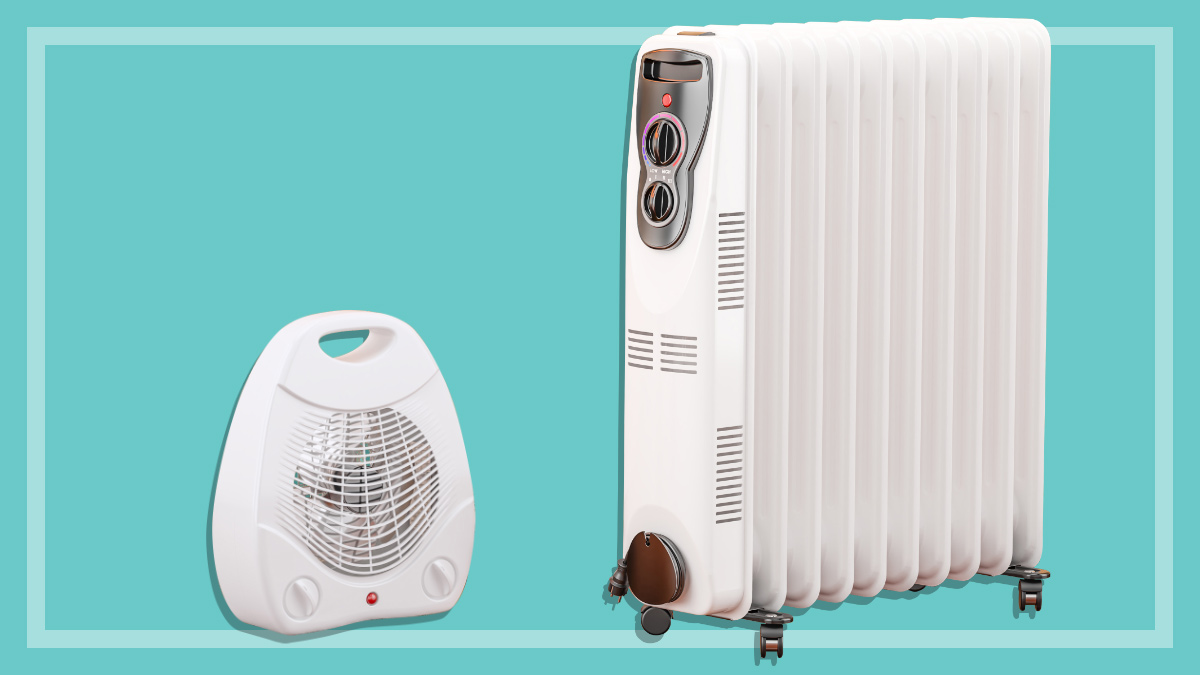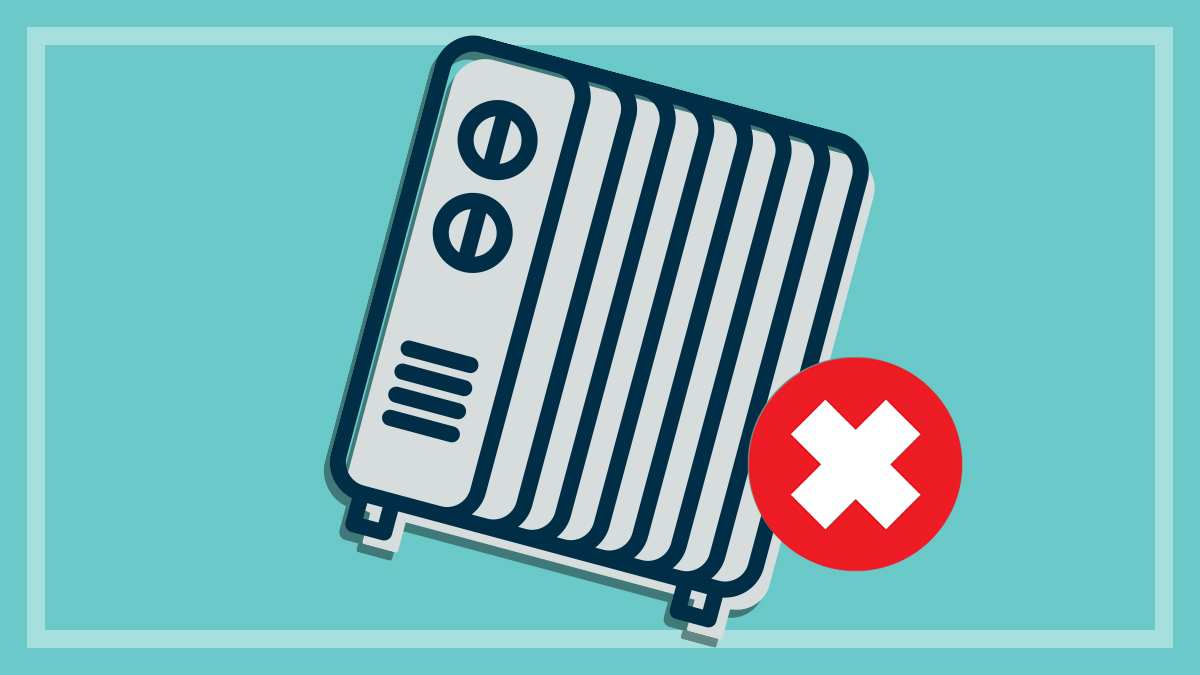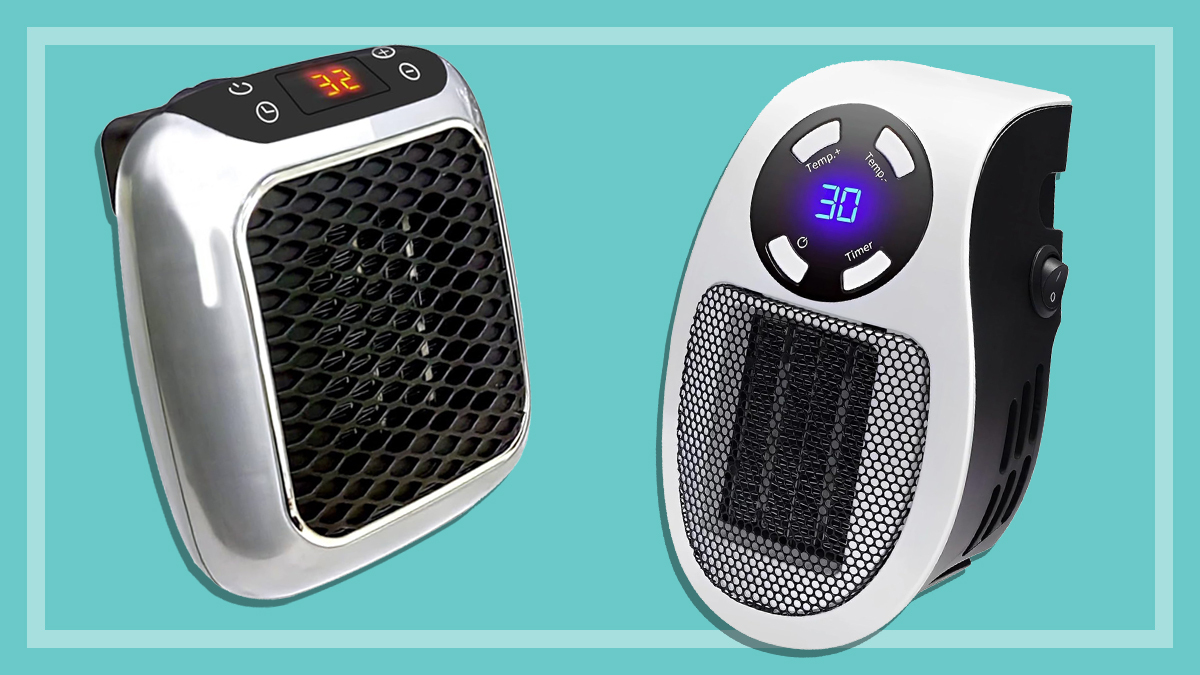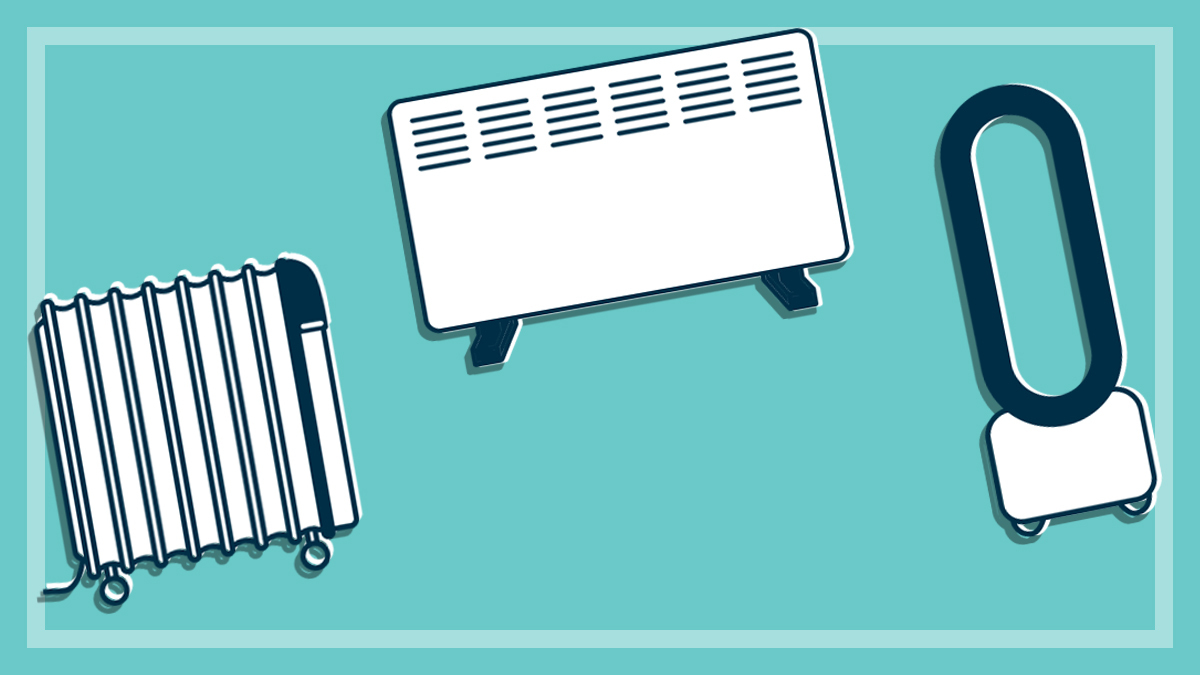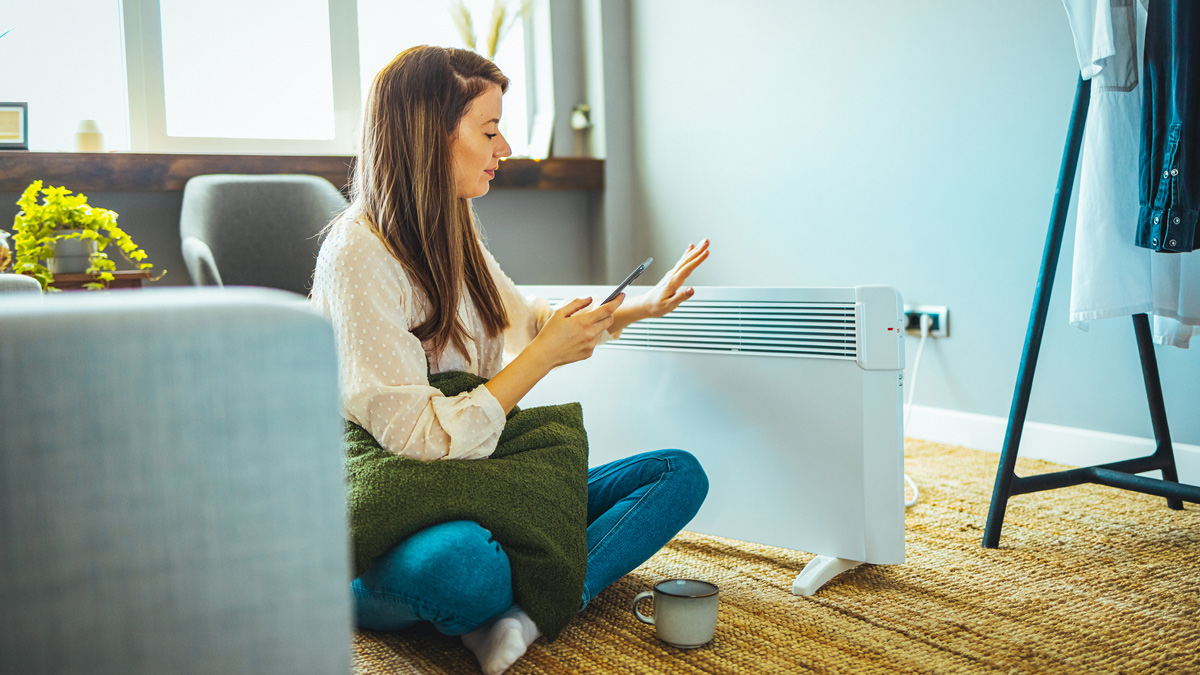Get our independent lab tests, expert reviews and honest advice.
7 things you should never do with an electric heater
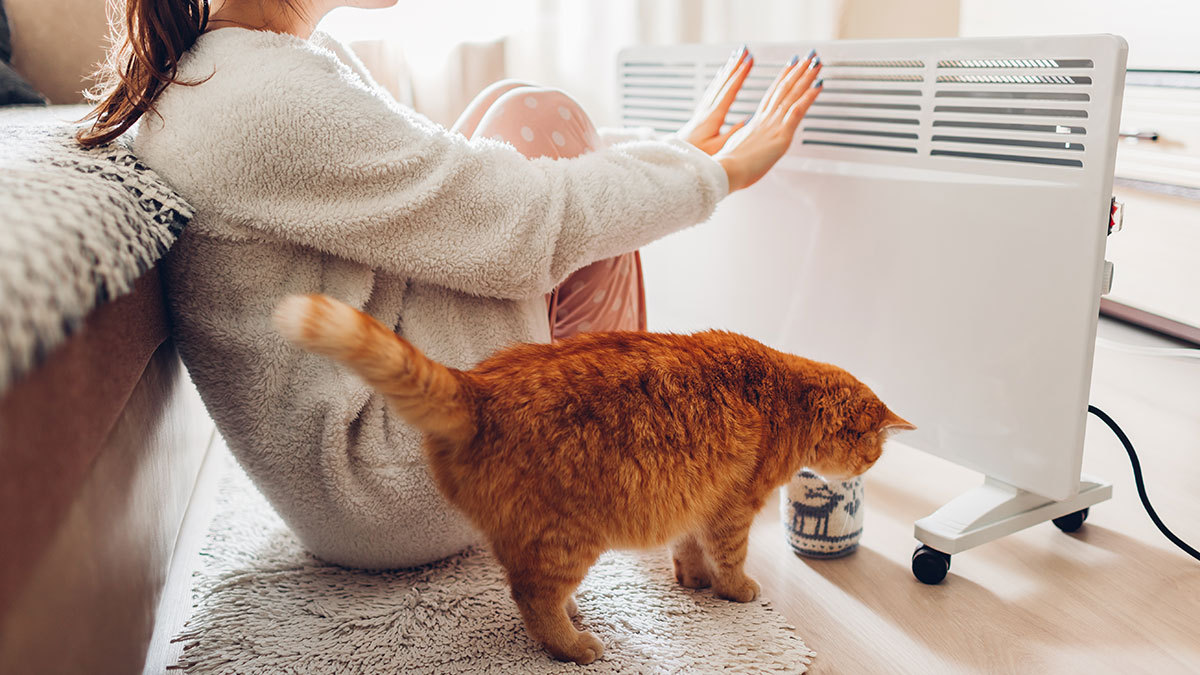
As the nights get longer and chillier, you’re probably thinking of pulling out your electric heater to warm up.
But before you plug it in, take a few minutes to brush up on these golden rules – for your own safety and that of others in your household.
Electrical appliances cause 40% of home fires, with heaters being one of the main culprits.
Here are seven things you should never do with an electric heater.
1. Don’t ignore the ‘leave a metre for heaters’ rule
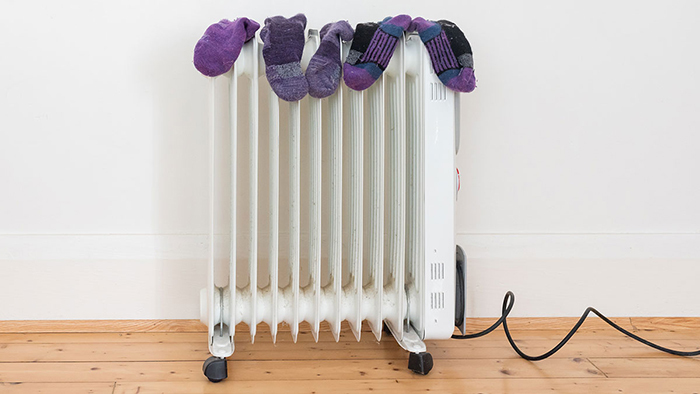
It’s important to leave space around electric heaters.
Fire & Rescue NSW recommends keeping everything at least one metre away from your heater – but especially anything flammable such as curtains, bedding and clothing.
And yes, that definitely means don’t use it to dry your clothes or warm up your towel, no matter how frustrated you are by slow-drying laundry or how cold your bathroom is.
In short, just don’t put anything on or close by your heater. Laundry on a rack more than one metre away should be okay.
2. Don’t plug it into a powerboard or extension cord
Heaters use a lot of energy, which can cause the extension lead or powerboard to overheat, potentially causing a fire. Always plug your electric heater into the powerpoint in the wall.
Our electric heater reviews list the cord length of each model so you can check whether it’s right for your home.
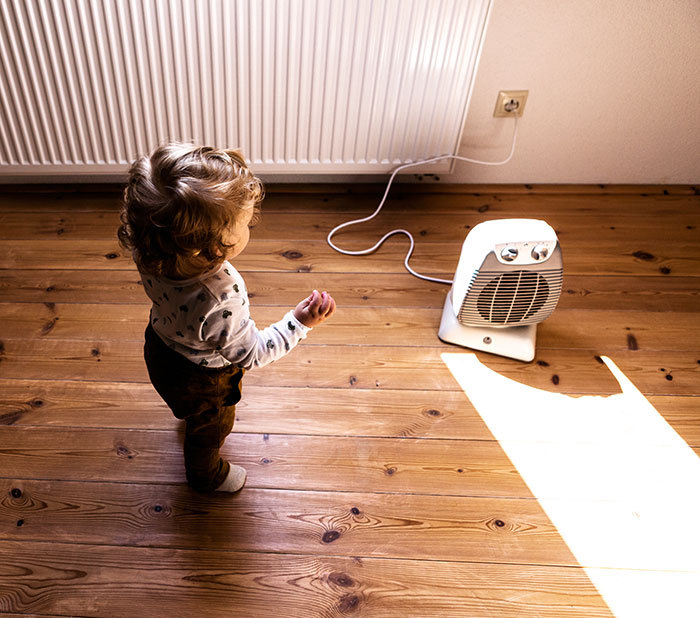
3. Don’t leave it unattended
Children and animals can be unpredictable at the best of times.
When you have an electric heater switched on in your house, always supervise children and pets around it.
And if you’re from a pet-free and kid-free home, still don’t leave it unattended, just to be safe.
4. Don’t leave it on high
If you hate cold mornings, we have some good news for you.
“Most heaters – particularly convection, panel and oil column heaters which don’t have exposed heating elements – are safe to leave on overnight on a low setting, as long as they are well clear of any furniture, curtains and so on, as per the ‘leave a metre for heaters’ rule,” says CHOICE heating expert Chris Barnes.
But it’s best not to leave it on a high setting overnight, or when you’re not close by (see point 3 above).
Also, check that the heater has a thermal cut-out feature (so it switches off if it gets too hot) and a tilt switch (so it turns off automatically if knocked over).
5. Don’t use it if you suspect it’s faulty
If you’ve had your heater packed away over summer and it’s time to drag it out of the cupboard again, don’t just plug it in and hope for the best – make sure you check it over carefully first.
Have a look at the cord to see if there are any loose wires, and check that the cord doesn’t feel hot to the touch when the heater is switched on. Give it a wipe down or even a vacuum to remove any dust inside and out.
Don’t just plug it in and hope for the best – make sure you check it over carefully first
It’s best to store heaters in a dry area to avoid any risk of rusting, and with a cover over them to avoid dust building up on and inside the heater.
You might notice an odd smell the first time the heater is turned on after months in storage – that’s probably just a bit of dust burning off, but if the smell persists for a long time, switch off the heater and check it thoroughly.
If you’re not 100% comfortable with it, don’t use it – have it serviced or replaced. Better safe than sorry!
6. Don’t put it on top of anything
No matter how chilly your toes are, or how many icicles you have hanging off your earlobes, don’t be tempted to put your heater on top of something to give it some height – and especially not something soft and flammable, such as a bed or sofa. If the heater tips over, it could easily start a fire.
In short, put it on the lowest, flattest surface you can find (usually the floor), following the one-metre rule.
7. Don’t try to use them to heat multiple rooms
Let’s face it, electric heaters aren’t the most efficient way to heat a room, and they’re certainly not an efficient way to warm a whole house.
Although they’re cheaper to buy upfront than a reverse-cycle air conditioner, they’ll cost you quite a bit to run, particularly if you have several running at once.
One way you can optimise your heater is to use your ceiling fans. It may sound counterintuitive, but it’s actually beautifully simple.
Most ceiling fans have a reverse switch. This makes the blades turn anticlockwise and, since warm air rises, it’ll push the warm air from your heater back down towards the floor, helping to keep you warmer.

